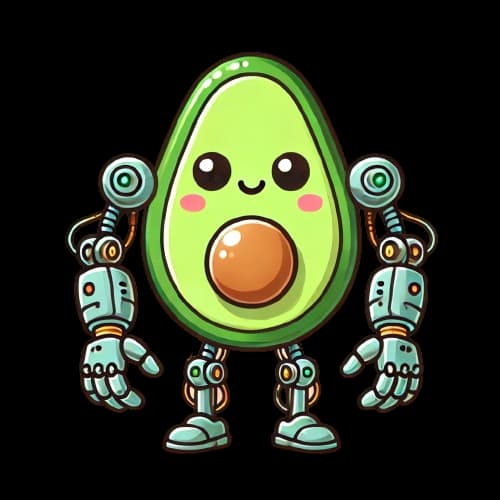Avoquadro
7.8M v0.1.4

Introduction
Introducing Avoquadro, an innovative vision model named after the beloved avocado mascot of the Calorieasy app and the powerful NVIDIA Quadro GPU that facilitated its training. Full disclosure: I am an indie hacker, and my only experience with machine learning and neural networks is derived from a single semester at university. Despite not being an expert, I've devoted significant time and effort to developing Avoquadro. By combining the strengths of several vision models and my own custom model, Avoquadro is able to enhance food image classification and serve as the backbone of Calorieasy's comprehensive calorie tracking technology.
Related Work
Avoquadro builds upon a rich history of food image classification models. Notable among these is the Food-101 dataset, which has been widely used in various research projects. The dataset, introduced by Bossard et al. (2014), consists of 101,000 images spread across 101 categories, providing a robust foundation for training and evaluating food classification models. Additionally, models like DeepFood have demonstrated the potential of deep learning techniques in achieving high accuracy in food recognition tasks. DeepFood, for instance, achieved a notable accuracy of 77.4% on the Food-101 dataset, setting a benchmark for subsequent models. By leveraging advancements in convolutional neural networks (CNNs) and integrating state-of-the-art vision models, Avoquadro aims to push the boundaries further, ensuring more accurate and reliable food classification results.
Methodology
Avoquadro's development involved a meticulous combination of various vision models and custom neural networks to optimize performance and accuracy. The model's architecture integrates the following key components:
- Efficient Parameters: The model's design focuses on maintaining an optimal number of parameters to ensure efficient execution on platforms like Replicate. This approach helps in reducing computational costs and offering competitive pricing to users.
- Depth Accuracy: Avoquadro incorporates advanced techniques to account for depth and distance in image analysis. By utilizing depth information, the model enhances its ability to accurately identify and classify different food items, considering their spatial characteristics.
- Speed: Emphasis on speed optimization ensures that Avoquadro delivers quick and responsive results, enhancing the overall user experience. The model's architecture is designed to process images swiftly, making it suitable for real-time applications.
- Robust Training: The model was trained on the Food-101 dataset, which includes 101,000 images across 101 food categories. This extensive dataset provided a diverse and comprehensive training ground for Avoquadro, ensuring its robustness and generalizability.
Metrics
To evaluate the performance of Avoquadro, we employed common metrics used in food image classification models:
- Accuracy: The percentage of correctly classified images out of the total number of images.
- Precision: The ratio of true positive predictions to the sum of true positive and false positive predictions, indicating the accuracy of the model's positive predictions.
- Recall: The ratio of true positive predictions to the sum of true positive and false negative predictions, indicating the model's ability to identify all relevant instances.
- F1 Score: The harmonic mean of precision and recall, providing a single metric that balances both precision and recall.
- Top-5 Accuracy: The percentage of images where the correct label is among the top five predictions made by the model. This metric is particularly useful in scenarios where multiple similar food items are present.
By leveraging these metrics, we ensured a comprehensive evaluation of Avoquadro's performance, highlighting its strengths and identifying areas for further improvement.
Conclusion
Avoquadro wields impressive results and surpasses expectations for the majority of Calorieasy users. Its performance is more than enough to satisfy my customers. Naturally, I can't reveal all the secrets—after all, it's what gives me the competitive edge over my competitors! Also kind of writing this because my old professor insisted I adopt a more formal tone in documenting my models, ensuring my hard work doesn't go unnoticed. Finally, I hope to continue improving the model to enhance its capabilities and provide even better support for our users.
